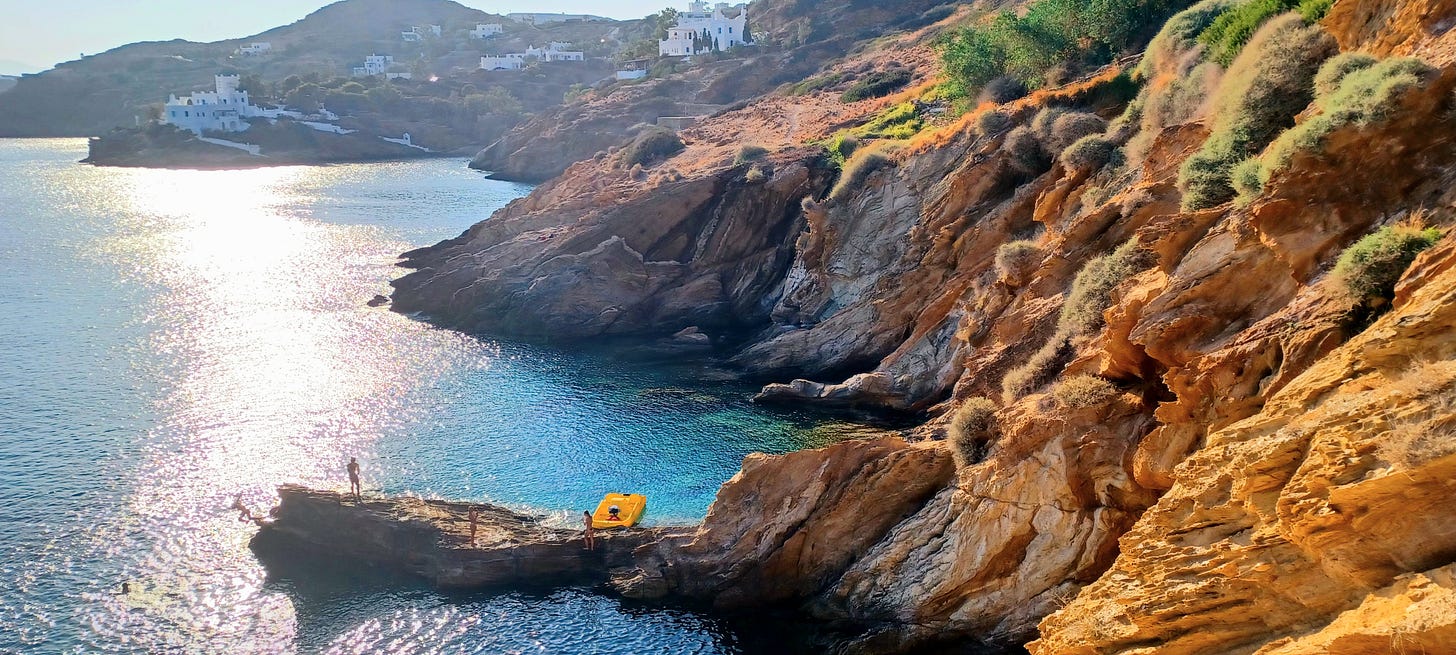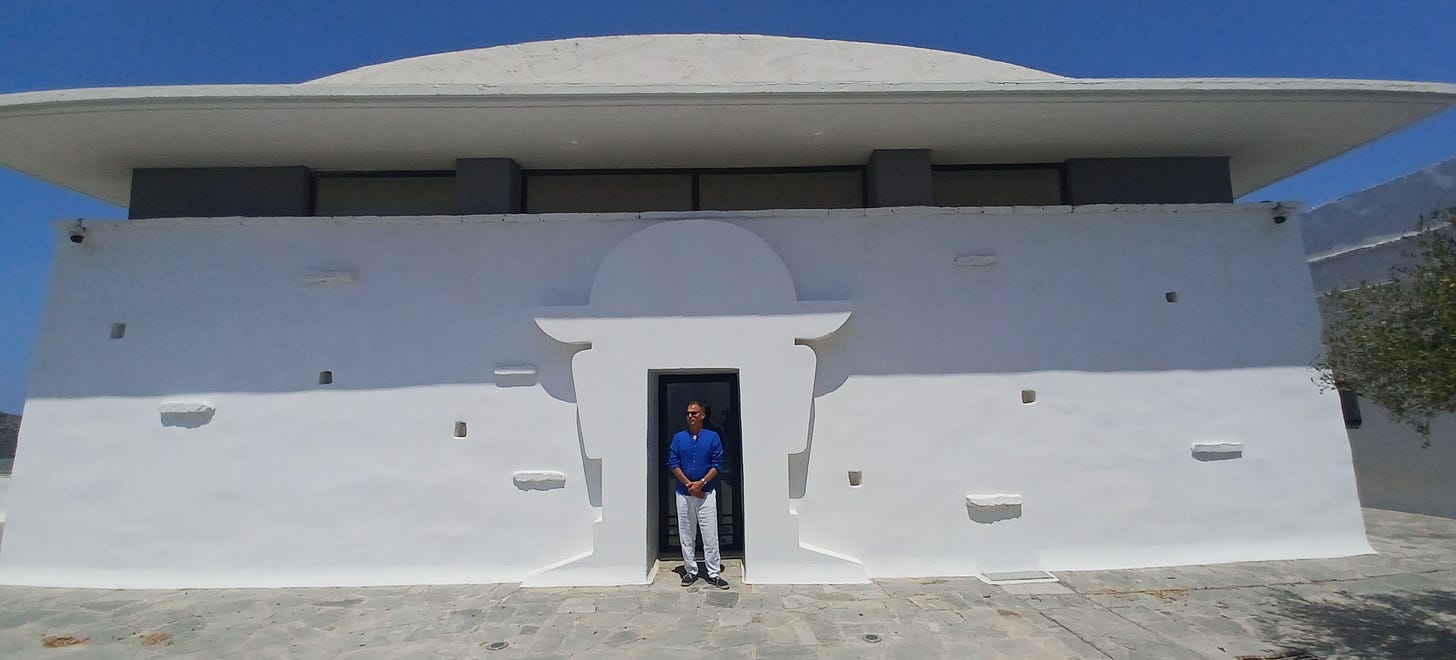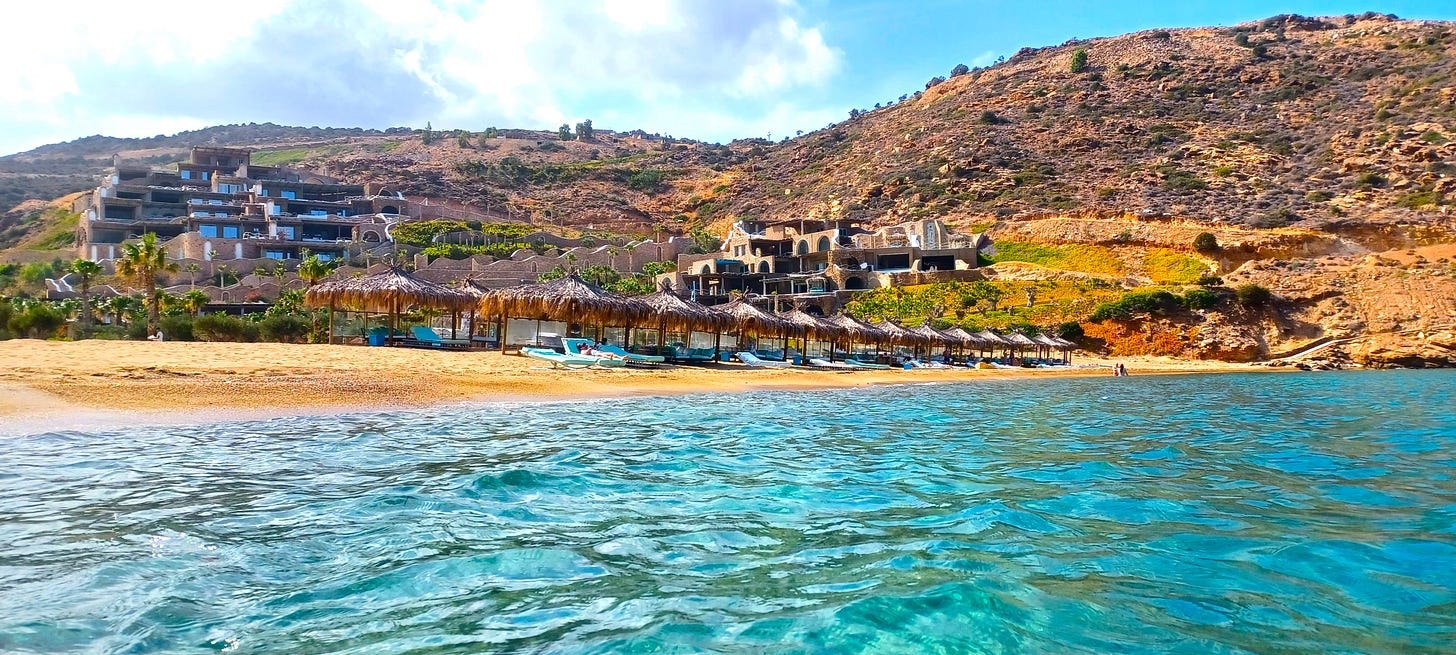This new museum will show that Ios, only an hour from Santorini, is more than just another party island
The Gaitis-Simossi Museum opens this month on the island where "The Big Blue" was filmed" and frankly it's a stunner
Some say Homer was born on this heap of rocks in the southern reaches of the Aegean Sea, others say it’s where he checked out. Starting this month though, Ios is going to have more cultural wind in its sails than a bust of the legendary poet in its small port and a mention of his apocryphal island tomb on its Wikipedia page.
On September 14 the Gaitis-Simossi Museum will open on a hilltop overlooking the chora, or main town of the island. It will showcase the life works of a renowned Greek painter, Yannis Gaitis — who spent the last decade of his life in Ios — and his partner, the sculptor Gabriella Simossi.
It was in the mid-1960s that Mr. Gaitis, according to Greece’s National Gallery, started making his “well-known figure of a little man, which he originally repeated around a central representation and later made into a schematic and standardized figure, constituting a symbol and ironic means of social criticism.”
The president of Greece, Katerina Sakellaropoulou, will be on hand to inaugurate the museum, which was several years in the making. The artists’ architect daughter, Loretta Gaitis, fitted recreated, oversized elements of the little man’s signature bowler hat and profile into the exterior structure of the museum pavilions. One houses Mr. Gaitis’s works while the other, a high-ceilinged warehouse-style building with colossal interior vaulted arches, is where Ms. Simossi’s monumental sculptures are displayed.
The dominant color of the museum complex is bright Cycladic white, which speaks to the character of the islands in these parts: elemental, uncomplicated, and cleansed by an unrelenting sun.
The sun, after all — along with gorgeous beaches — is what seems to attract half of the under-25 population of Australia to this place in any given summer. This summer, as a recent visit seemed to indicate, was no exception.
While Mykonos has a mystique of its own, Ios has a groove that can hit like a crafty island cocktail. Even its name carries with it the deceptively simple charged exoticism of a Bali or Ibiza, and is said to stem from an ancient Greek word for flowers — possibly violets.
Ios is wild in aspect; hilly, rugged, and despite the creeping inroads of tourism often still startlingly empty. There are cliffs that plunge precipitously to seas that look like catchments of melted blue glass, lonely blue and white churches, olive trees blown sideways by the Etesian winds and yes — I saw them — patches of violets.
The best way to explore the chiseled coast is by boat — a yacht would be ideal, but an aquatic excursion need not be expensive.
At the little port of Ios the main attraction is the absence of any “Instragrammable” attraction. There is a smattering of seaside cafés, the broad Gialos Beach, and a few small hotels.
Driving in Ios is an adventure in switchbacks and sweeping views. I can think of nowhere else in the world where a road can make you feel as if you are literally flying over the sky, especially on the south side when the ethereal contours of the Santorini across the horizon seemingly float underneath you. More than once, I had to stop the car to process this, but the truth is I still haven’t.
There are more beaches in Ios than I will have time for, and sadly I had no time for what looked like one of the best, Kalamos. Koumbara, a beach closer to the port, is also near the Erego Beach Club, a place flamboyant and monumental in scale. The owner also has a couple of hotels on the island, if your tastes lean to the theatrical. I thought smaller places like Liostasi and a new spot called Bliss are more in keeping with the laidback island vibe.
Another famous beach is Manganari, actually a series of three beaches with Caribbean-caliber golden sand and aquamarine water. Scenes from the 1988 French movie “Le Grand Bleu” were filmed here, and French tourists still come on account of that.
Illusory as it is, in places like Manganari Ios can feel as remote as a miniature lost continent, and though it is small, the scale of things can surprise you. Where am I, really?
This is a question that I will be asking myself repeatedly over the course of the three days I am rambling around the island. At one point I had to wait for a trip of goats to cross the road. The driver behind me was in a hurry, but I put my hand out the window to signal we would both have to wait. Anyway, why rush? Those wily creatures are, after all, responsible for some fine local cheeses.
Generally Ios is not a foodie island — think Naxos or Tinos for that — but one could do worse. At Mosenta Traditional Products, by the port, I bought a slice of watermelon cake fresh from the oven. On the road to the fine beach at Agia Theodoti, I passed by a traditional taverna called Bilaeti, and stopped in for the signature garden salad and a rectangle of baked feta cheese roasted with black sesame and honey. It was good.
The absence of touristic iconography lends an authenticity to Ios that can be as disarming as it is revivifying. Look, there’s a cove with star-power turquoise water and not a beach bar in sight. Over there, a donkey with a picturesque row of disused windmills behind and no one around to take a picture — for now, that is.








